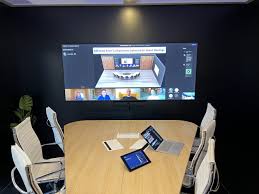Types of Virtual Meeting Platforms
In today’s digital age, virtual meetings have become an essential part of how we communicate and collaborate. There are various virtual meeting platforms available, each offering unique features to cater to different needs. Let’s explore some of the most popular types:
Video Conferencing Platforms:
Video conferencing platforms like Zoom, Microsoft Teams, and Google Meet allow users to conduct face-to-face meetings in real-time. These platforms typically offer features such as screen sharing, chat options, and recording capabilities.
Webinar Platforms:
Webinar platforms such as GoToWebinar and Webex Events are designed for hosting online events with larger audiences. These platforms often include interactive features like polls, Q&A sessions, and analytics to track participant engagement.
Virtual Event Platforms:
Virtual event platforms like Hopin and Remo provide a virtual space for hosting conferences, trade shows, and networking events. These platforms offer customizable virtual environments with features like exhibitor booths, networking lounges, and sponsorships.
Collaboration Tools:
Collaboration tools such as Slack and Microsoft Teams also offer virtual meeting capabilities alongside their primary functions for team communication and project management. These tools enable seamless integration of meetings into daily workflows.
Choosing the right virtual meeting platform depends on factors such as the size of your audience, desired features, and budget constraints. With a wide range of options available, there is a virtual meeting platform suited for every need.
Top FAQs About Choosing the Right Virtual Meeting Platform
- What are the most popular video conferencing platforms?
- How do webinar platforms differ from video conferencing platforms?
- What features should I look for in a virtual event platform?
- Which collaboration tools offer virtual meeting capabilities?
- How can I choose the right virtual meeting platform for my needs?
What are the most popular video conferencing platforms?
When it comes to the most popular video conferencing platforms, a few names stand out prominently in the digital landscape. Zoom has gained widespread recognition for its user-friendly interface, high-quality video and audio capabilities, and versatile features like screen sharing and virtual backgrounds. Microsoft Teams is another top contender known for its seamless integration with other Microsoft Office tools, making it a preferred choice for businesses already using Microsoft products. Google Meet rounds out the trio with its simplicity and accessibility through Gmail accounts, making it a convenient option for individuals and small teams. These platforms continue to evolve to meet the increasing demand for virtual communication solutions in today’s fast-paced world.
How do webinar platforms differ from video conferencing platforms?
Webinar platforms and video conferencing platforms serve distinct purposes despite both being used for virtual meetings. Webinar platforms, such as GoToWebinar and Webex Events, are designed for hosting online events with larger audiences and typically offer interactive features like polls, Q&A sessions, and analytics to track participant engagement. On the other hand, video conferencing platforms like Zoom and Microsoft Teams focus on real-time face-to-face meetings with features like screen sharing, chat options, and recording capabilities. While both types of platforms facilitate virtual communication, webinar platforms cater to larger audiences and events with specialized engagement tools, whereas video conferencing platforms prioritize direct communication among smaller groups in real-time.
What features should I look for in a virtual event platform?
When considering a virtual event platform, it’s essential to look for features that can enhance the overall attendee experience and help you achieve your event goals effectively. Key features to consider include customizable virtual environments for branding consistency, interactive tools like polls and Q&A sessions to engage participants, networking capabilities to facilitate connections among attendees, analytics for tracking event performance and participant engagement, and seamless integration with other tools or platforms you may be using. Additionally, ensure the platform offers reliable technical support and security measures to maintain a smooth and secure virtual event experience for all participants. By prioritizing these features, you can select a virtual event platform that meets your specific needs and ensures a successful event.
Which collaboration tools offer virtual meeting capabilities?
When exploring virtual meeting platforms, it’s common to wonder which collaboration tools provide virtual meeting capabilities. Several popular collaboration tools, such as Slack and Microsoft Teams, offer integrated virtual meeting features alongside their primary functions for team communication and project management. These tools streamline the process of scheduling and conducting virtual meetings within a familiar workspace, allowing teams to seamlessly transition between discussions, file sharing, and real-time collaboration. By leveraging these collaboration tools with built-in virtual meeting capabilities, teams can enhance productivity and communication while maintaining a cohesive workflow.
How can I choose the right virtual meeting platform for my needs?
When selecting the ideal virtual meeting platform for your requirements, it is crucial to consider several factors to ensure a seamless and effective virtual meeting experience. Start by identifying your specific needs, such as the size of your audience, desired features like screen sharing or interactive tools, and budget constraints. Research different virtual meeting platforms available in the market, comparing their functionalities, user reviews, and pricing plans. Additionally, consider factors like ease of use, security features, and compatibility with your existing technology infrastructure. By carefully evaluating these aspects and aligning them with your unique needs, you can choose the right virtual meeting platform that best suits your requirements and enhances your virtual collaboration experience.


